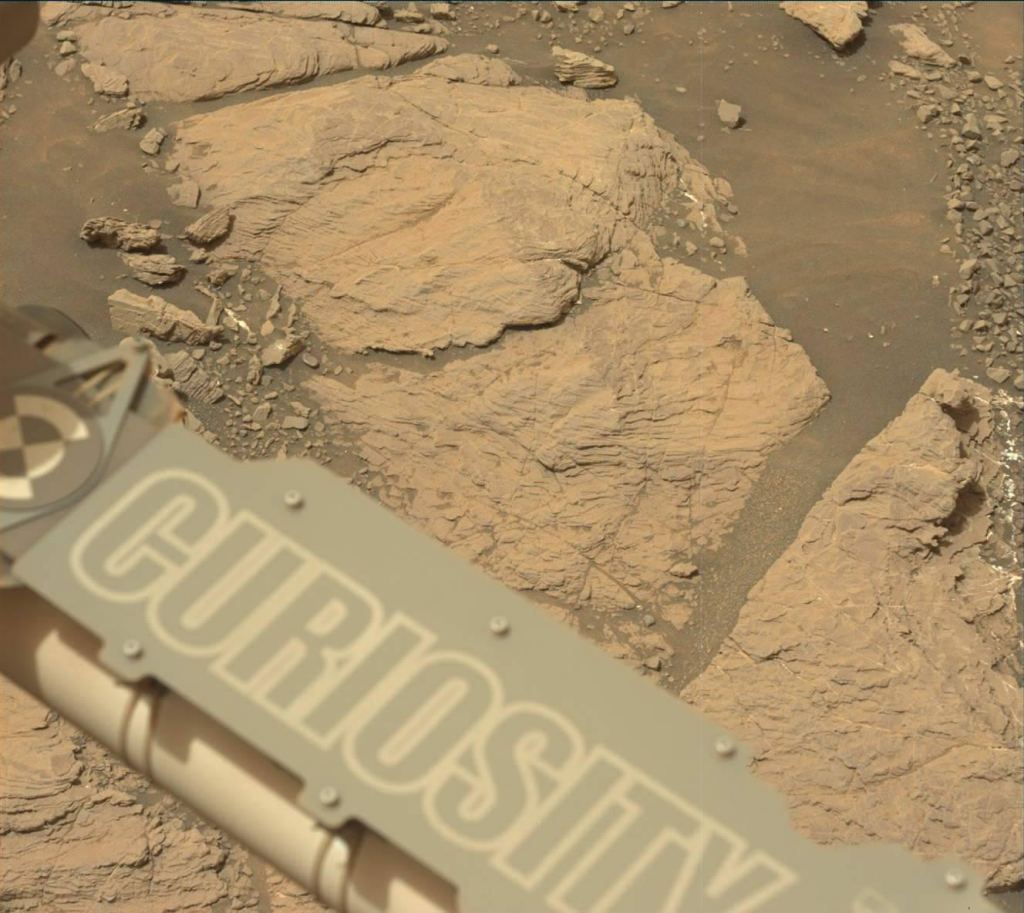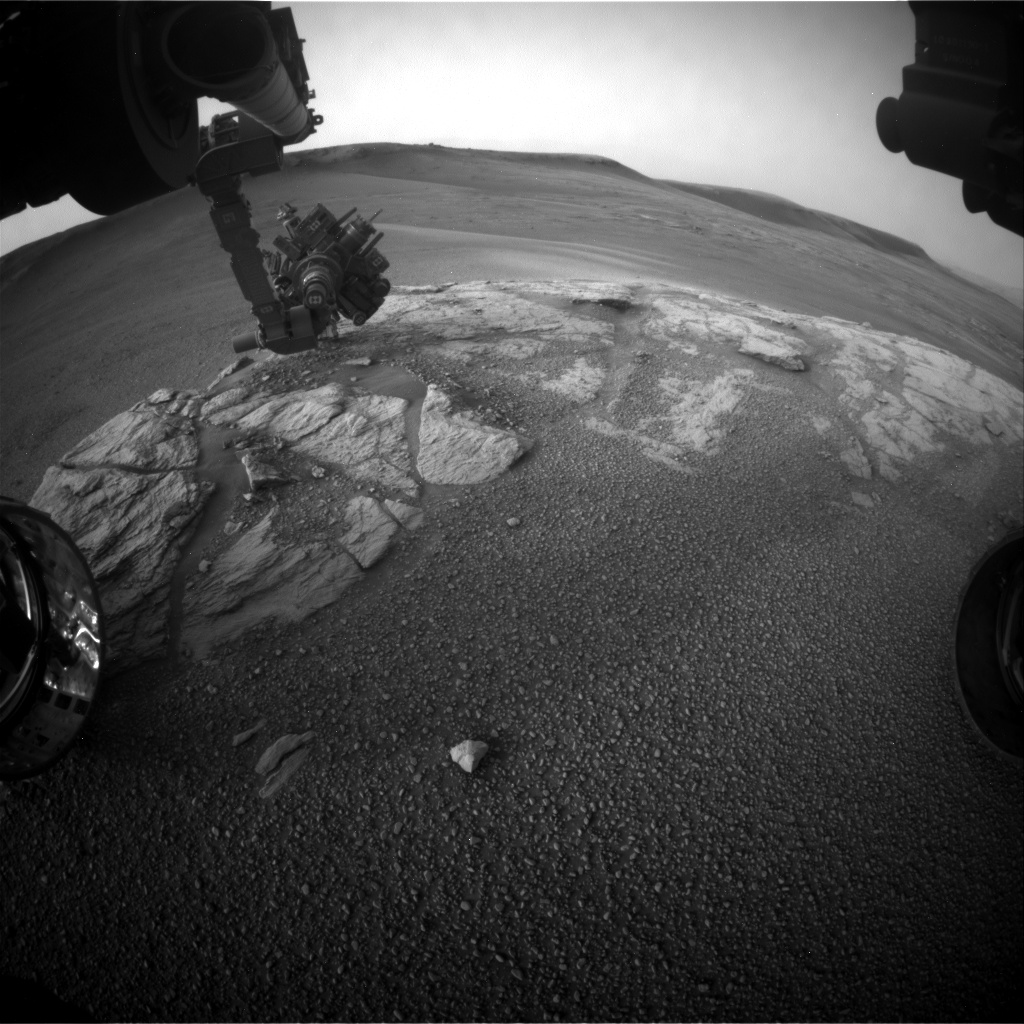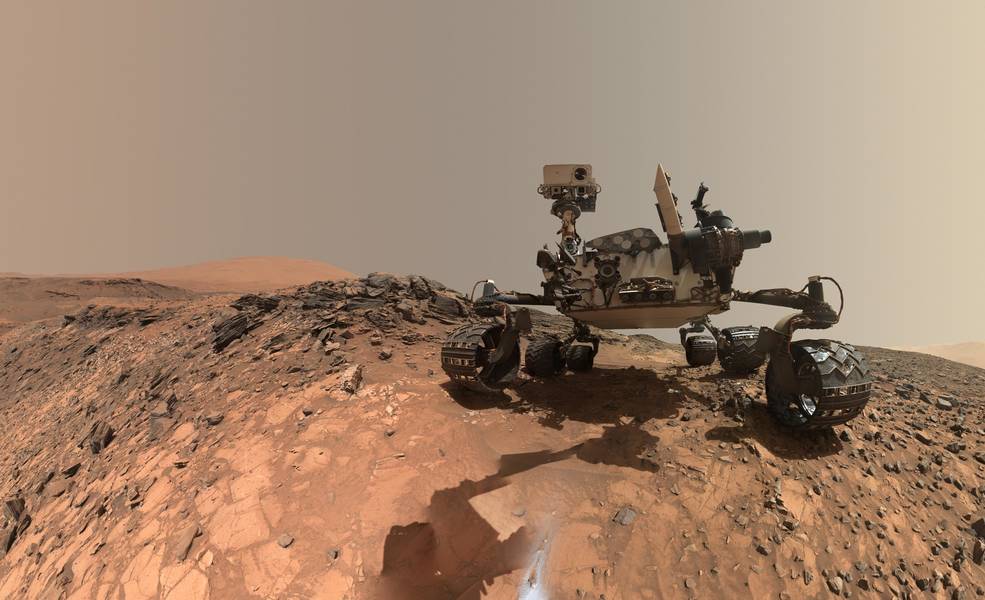In 2012, NASA’s Curiosity rover landed in the Gale Crater on Mars and began exploring for clues about the planet’s past and subsequent evolution. Since 2014, it has been investigating Mount Sharp (aka. Aeolis Mons) – the central peak within Mars’ Gale Crater – in the hopes of learning more about Mars’ warm, watery past (and maybe find signs of past life!)
On February 15th of this year (Sol 2320), Curiosity gave mission controllers a bit of a scare when it suffered a technical glitch and automatically entered safe mode. Luckily, as of Thursday, Feb. 28th, Curiosity’s science team reported that after getting the rover back online and running a series of checks, the rover is in good shape and ready to resume normal science operations.
After spending a few days in safe mode, the rover was brought back online on Tuesday, Feb. 19th. The mission’s engineering team then proceeded to boot the rover up 30 times to make sure that the technical issue did not repeat itself. And over the course of last weekend, the team sent and received technical data with the rover in an effort to find the cause of the issue.

Image taken by NASA’s Curiosity rover using itss Mastcam on Feb. 10th, 2019 (Sol 2316). Credit: NASA/JPL-Caltech/MSSS
As Steven Lee, Curiosity‘s deputy project manager at NASA’s Jet Propulsion Laboratory, explained in a recent NASA press release:
“We’re still not sure of its exact cause and are gathering the relevant data for analysis. The rover experienced a one-time computer reset but has operated normally ever since, which is a good sign. We’re currently working to take a snapshot of its memory to better understand what might have happened.”
At the time, Lee also indicated that until the team had a better understanding of what happened, science operations would remain on hold. “In the short term, we are limiting commands to the vehicle to minimize changes to its memory,” he said. “We don’t want to destroy any evidence of what might have caused the computer reset. As a result, we expect science operations will be suspended for a short period of time.”
That changed on Feb. 28th when the science team announced that the rover had returned to science operations. This consisted of investigating the a region on the slopes of Mount Sharp – dubbed “Glen Torridon” – that is rich in clay minerals. These minerals (which form in water) have always been a source of interest to Curiosity team, since they are a remnant of a time when Mars’ surface was much wetter than it is today.
The study of these minerals may therefore offer new clues about the ancient Martian environment and its ability to support life. Meanwhile, the mission team is still studying the computer reset the rover experienced to find the cause. While it remains a mystery what caused Curiosity to temporarily shut down, no other issues have arisen since.
This glitch was something of a scare for NASA and the general public considering the recent announcement regarding Opportunity. After being caught in a planet-wide dust storm that began in June 2018, the solar-powered rover was forced to suspend operations until the storm passed. Unfortunately, the rover still needed to keep its internal heaters on to prevent the batteries from becoming inoperable.
After several months, the storm lifted and mission controllers began trying to restore attempt communications with the rover. After multiple attempts failed, the mission team declared that Opportunity was inoperable on Feb. 12th. After 14 years of faithful service investigating the Martian surface, the little rover that could had concluded its mission.
This makes Curiosity one of just two missions that are currently conducting science operations on the Red Planet. The other is NASA’s Interior Exploration using Seismic Investigations, Geodesy and Heat Transport (InSight) lander, which reached Mars on Nov. 26th, 2018 and is currently investigating Mars’ seismology and interior structure.

While the engineers continue to investigate the source of Curiosity‘s shutdown, the rest of the rover team is eager to get back to work. This will include taking the first drill sample from the Glen Torridon region to see what it can tell them about past water flows on Mars. As Ashwin Vasavada, Curiosity’s project scientist at NASA JPL, said:
“The science team is eager to drill our first sample from this fascinating location. We don’t yet understand how this area fits into the overall history of Mount Sharp, so our recent images give us plenty to think about.”
Since its arrival on Mars, Curiosity has spent the past seven years studying the Martian surface and unlocking its secrets. These include definitive evidence of water in the past and confirming the presence of methane and other organic molecules. Before the mission has depleted its supply of nuclear fuel, which will not happen for several years, we can expect that it will reveal a great deal more!
Further Reading: NASA

